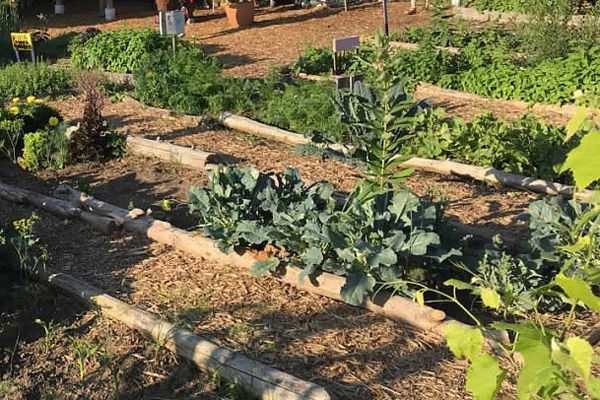The Of City Blooming
The 6-Minute Rule for City Blooming
Table of ContentsSome Known Questions About City Blooming.Fascination About City BloomingNot known Incorrect Statements About City Blooming The Definitive Guide for City BloomingSome Known Factual Statements About City Blooming
Interested in expanding food for sale in the City of Chicago? Below is a listing of often asked inquiries concerning the rules and regulations that farmers ought to take into consideration when preparing an urban farming job.
The zoning modification does not customize any other codes handling composting, building authorizations, purchasing or renting City had property, organization licenses or ecological contamination. There are existing codes that regulate these concerns and they continue to be completely impact and might apply to your task. Neighborhood gardens are usually possessed or handled by public entities, public organizations or community-based companies and kept by volunteers.
Urban ranches grow food that is meant to be offered, either on a not-for-profit or for-profit basis. Due to their commercial purpose, urban farms call for an organization certificate.
The Best Guide To City Blooming
Composting is allowed yet just for plant material that is created and utilized on site. The amount of garden compost material can not surpass 25 cubic backyards at any type of offered time according to the criteria in 7-28-715 of the City's Municipal Code. Yes. Due to the fact that the dirt at a lot of new yard websites needs modifying, garden compost, soil, wood chips, or other products can be obtained to construct or boost the expanding area - City gardening.

If a building permit is called for after that the hoophouse will certainly be thought about an accessory building. You can find out even more about the structure permit needs by speaking to the Division of Buildings. The 25,000-square-foot dimension restriction is meant to protect against a single neighborhood yard from controling a provided block or taking away from the block's existing household or industrial personality.
The limit does not use to gardens found in Public Open Space (POS) areas. Can there be greater than one community garden that is 25,000 square feet on a solitary block? Yes. The size limitation uses to individual gardens, not to specific blocks. No. Fencing is not called for, nonetheless, gardens that have big parking lot may be called for to set up secure fencing or other landscaping attributes.
Some Known Details About City Blooming
B1 & B2 districts need that all commercial usage tasks be carried out inside your home. R districts limit business activity. The guidelines show the function and intent of the Zoning Code. Is fence needed for city ranches? Yes. Fencings may be required, together with landscape design and testing, for sure parking areas and outside work or storage locations relying on place and the particular task happening.
Yes. Urban ranches require structure permits and zoning authorizations before construction. Other forms of city evaluation may be needed relying on specific frameworks, activities, dimension, landscaping, licensing, public heath and stormwater monitoring concerns. Many of these requirements are identified in the project layout or permitting procedure, nevertheless, the applicant may be responsible to independently determine specific official statement licenses or permits that might be needed.
The Department of Organization Matters and Consumer Security can aid establish the certain kind of business license that's required. Off street vehicle parking is required for most business projects in Chicago. The required number of car parking spaces is based on the number of staff members functioning on site and not the square video of the expanding room.
3 Easy Facts About City Blooming Described

Yes. A city ranch can market garden compost product created on site, nonetheless, the operation has to abide by the laws in 7-28-715 of the Chicago Municipal Code. Yes. Aquaponic systems are permitted inside on metropolitan farms in many zoning areas. A zoning evaluation and structure license is required in order to mount frameworks or systems and a business license is required as explained above.
As much as five hives or swarms of honey may be maintained as an accessory usage. Beekeepers need to sign up with the Illinois Department of Agriculture. For more details concerning the proposed zoning change you may call the Division of Real Estate and Economic Advancement, Bureau of Preparation and Zoning at 312.744.8563.
Farming in cities and metropolitan areas A metropolitan farm in Chicago. Urban agriculture refers to numerous techniques of cultivating. https://www.find-us-here.com/businesses/City-Blooming-San-Francisco-California-USA/34090046/, handling, and distributing food in metropolitan locations. The term also uses to the location tasks of animal husbandry, tank farming, beekeeping, and gardening in a metropolitan context. Urban farming is identified from peri-urban farming, which takes place in backwoods beside residential areas.
A Biased View of City Blooming
It can entail a motion of natural growers, "foodies" and "locavores", that seek to develop social networks based on a common principles of nature and neighborhood holism. These networks can establish using formal institutional assistance, becoming integrated into local community planning as a "change town" activity for sustainable metropolitan development.
In either case, the a lot more straight access to fresh vegetable, fruit, and meat items that may be understood through city farming can enhance food protection and food security while reducing food miles, leading to reduced greenhouse gas exhausts, thereby contributing to environment modification mitigation. A few of the very first proof of city farming comes from Mesopotamia.